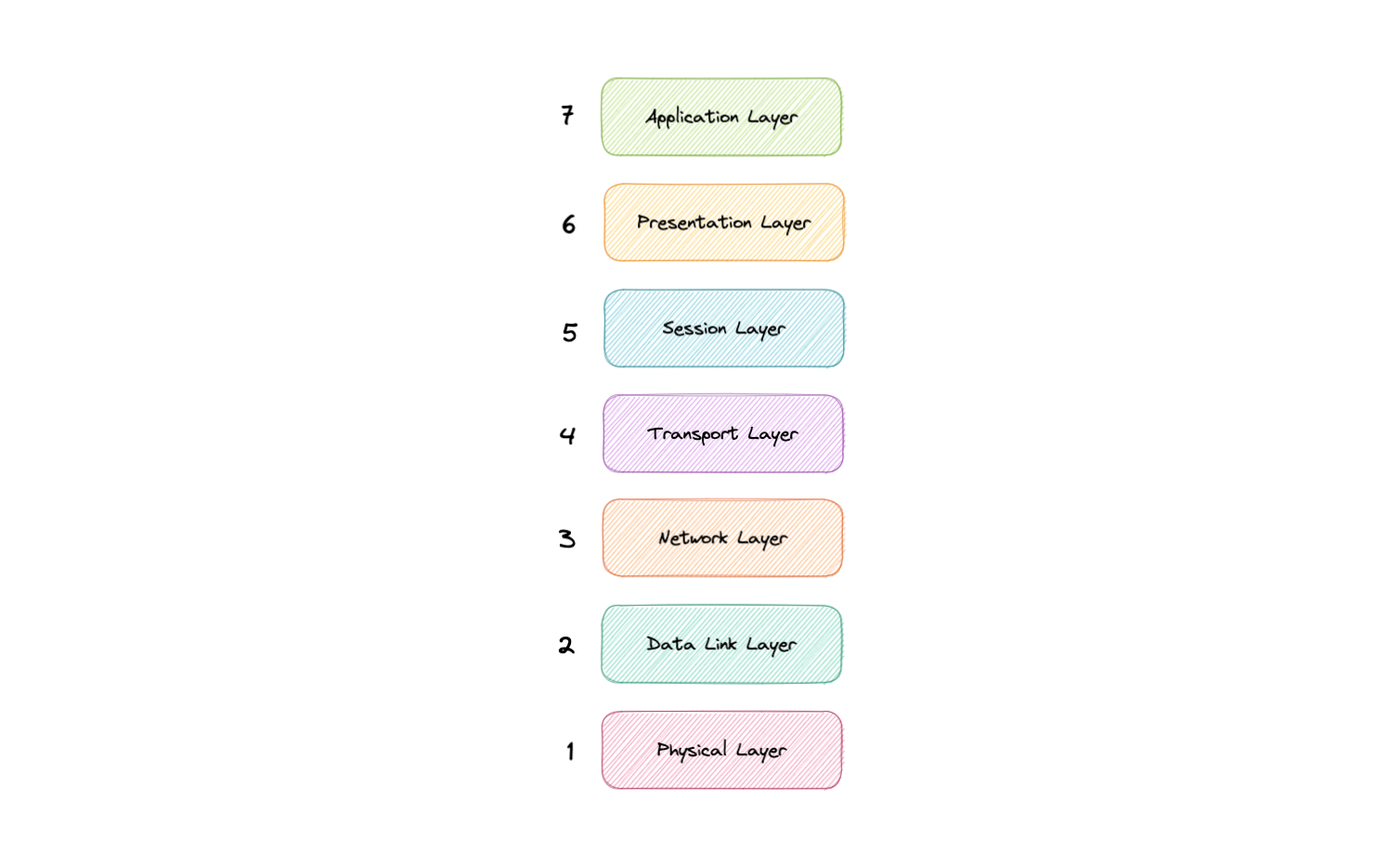The OSI Model is a logical and conceptual model that defines network communication used by systems open to interconnection and communication with other systems. The Open System Interconnection (OSI Model) also defines a logical network and effectively describes computer packet transfer by using various layers of protocols.
The OSI Model can be seen as a universal language for computer networking. It’s based on the concept of splitting up a communication system into seven abstract layers, each one stacked upon the last.
Why does the OSI model matter?
The Open System Interconnection (OSI) model has defined the common terminology used in networking discussions and documentation. This allows us to take a very complex communications process apart and evaluate its components.
While this model is not directly implemented in the TCP/IP networks that are most common today, it helps us with:
- Standardization: The OSI model introduces a universal language for networking. This enables devices and software from different manufacturers to work together seamlessly.
- Troubleshooting: By isolating communication into distinct layers, the OSI model makes diagnosing network issues much more efficient.
- Modular Design: This layered structure promotes modular network development, allowing for updates and changes in one layer without disrupting others.
Layers
The seven abstraction layers of the OSI model can be defined as follows, from top to bottom:

1. Physical Layer (Layer 1)
The Physical Layer is the lowest layer of the OSI model. It deals with the physical connection between devices and the transmission and reception of raw binary data over a communication medium. It includes everything from the cable type, radio frequency link, as well as the layout of pins, voltages, cable specifications, and other physical aspects. This layer’s primary purpose is to establish, maintain, and deactivate the physical connection.
2. Data Link Layer (Layer 2)
The Data Link Layer provides node-to-node data transfer—a link between two directly connected nodes. It detects and possibly corrects errors that may occur in the Physical Layer. It is subdivided into two sublayers: the Media Access Control (MAC) layer, which controls how devices in a network gain access to a medium and permission to transmit data, and the Logical Link Control (LLC) layer, which manages frame synchronization, flow control, and error checking.
3. Network Layer (Layer 3)
The Network Layer is responsible for packet forwarding including routing through intermediate routers. It manages the delivery of packets from the source to the destination across multiple links (networks). This layer defines the network address or IP address which is used by the router to make decisions about routing the packets to their destination.
4. Transport Layer (Layer 4)
The Transport Layer delivers data between application processes on different hosts. It provides reliable data transfer services to the upper layers. This layer is responsible for end-to-end communication over the network. It provides mechanisms for error correction, data flow control, and ensures complete data transfer. Common protocols operating at this layer include TCP (Transmission Control Protocol) and UDP (User Datagram Protocol).
5. Session Layer (Layer 5)
The Session Layer establishes, manages, and terminates connections between applications. It sets up, coordinates, and terminates conversations, exchanges, and dialogues between the applications at each end. It deals with session and connection coordination.
6. Presentation Layer (Layer 6)
The Presentation Layer deals with the syntax and semantics of the information transmitted. In essence, it provides a data translation function that can translate from a format used by the application layer into a common format at the sending station, and then back from the common format to a format known to the application layer at the receiving station. It handles data encryption, compression, and translation services.
7. Application Layer (Layer 7)
The Application Layer is the top layer of the OSI model. It provides services directly to user applications. This layer facilitates interaction between the software application and the user. It provides interfaces and protocols that software applications use for communication. Common examples of application layer protocols include HTTP (Hypertext Transfer Protocol), FTP (File Transfer Protocol), and SMTP (Simple Mail Transfer Protocol).